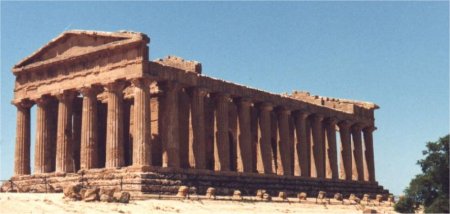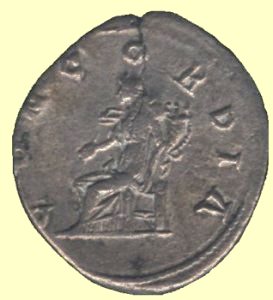
Concordia is the Roman personification of harmony and agreement and she probably finds her origin in the Greek goddess Homonoia. Homonoia was the goddess of concord along with her mother Praxidike (Justice) and sister Arete (Virtue) she formed a divine triad known as the Praxidikai (the Exacters of Justice). Concordia was very important in Roman believe and she had several temples and shrines dedicated to her with the oldest, situated on the Forum Romanum, dedicated to her by Camillus in 367 BC. New temples were frequently built to commemorate the restoration of civil harmony after major civil disputes were settled. Offerings were made to Concordia on the birthdays of emperors, and Concordia Augusta was worshipped as the promoter of harmony in the imperial household.

Temple of Concordia at Agrigento on Sicily.
Concordia is represented on coins holding a patera or olive branch in her right hand and a cornucopia (symbolising the prosperity which comes from harmony) or a sceptre in her left hand. Other symbols used are two hands joined together, and two serpents entwined about a heralds staff, a caduceus. She is often depicted in troubled times, seeking to unite public opinion behind Imperial policy. Common inscriptions on coins are CONCORDIA EXERCITVS and CONCORDIA MILITVM meaning unity of the army or the militia. On these coins Concordia is depicted holding military symbols of authority, such as two standards or a scepter. Sometimes she is depicted standing between two members of the royal house who clasp hands signifying an alliance.
